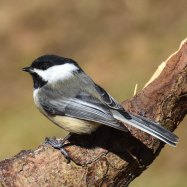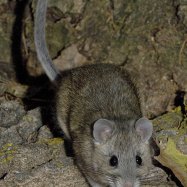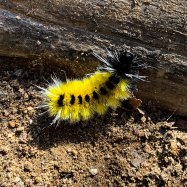
Fox Squirrel
17 to 27 inches
Meet the Fox Squirrel, an adorable mammal found in the eastern and central parts of the United States. With a medium-sized body and lengths ranging from 17 to 27 inches, these fluffy creatures are part of the Sciuridae family. Spot one in your backyard and be amazed by their acrobatic abilities and playful nature. #FoxSquirrel #USAnimals #Sciuridae
Animal Details Summary:
Common Name: Fox Squirrel
Kingdom: Animalia
Habitat: Forests, woodlands, and urban areas
The Curious and Resourceful Fox Squirrel: A Native of North America
Have you ever spotted a playful, bushy-tailed rodent scurrying across your backyard or through the trees in a park? Chances are, you were witnessing the antics of a fox squirrel, a fascinating creature with a wide distribution across North America. With its distinctive coloration and fascinating habits, the fox squirrel is a beloved and well-known member of the mammal community. But how much do we really know about this curious and resourceful animal? Let's dive deeper into the world of the fox squirrel and discover its unique characteristics and behaviors.The Fox Squirrel's Scientific and Common Names
Let's start with the basics Fox Squirrel. The fox squirrel, commonly known as Sciurus niger in the scientific community, belongs to the animal kingdom Animalia and the phylum Chordata. Its classification as a mammal places it alongside other well-known creatures such as dogs, cats, and bears. Within the mammal class, the fox squirrel belongs to the order Rodentia and the family Sciuridae, which includes other squirrel species such as the eastern gray squirrel and the red squirrel.A Habitat Fit for Squirrels
The fox squirrel is a highly adaptable creature, and it can be found in a variety of habitats. Its natural home is in the forests and woodlands of North America, where it can easily find food and shelter. However, as urbanization and deforestation have increasingly encroached on its natural habitat, the fox squirrel has also adapted to life in more urban areas, such as parks and backyards. This adaptability has allowed it to thrive in different environments and maintain a stable population.Feasting on a Balanced Diet
One of the most interesting facts about the fox squirrel is its omnivorous feeding habits. This means that it can eat both plant and animal-based foods, making it a resourceful and opportunistic forager Frizzle Chicken. In the wild, its diet consists of nuts, seeds, fruits, fungi, and insects. But in urban areas, it has been known to scavenge for human food, such as bird eggs, insects, and even discarded junk food. With a versatile palate and sharp senses, the fox squirrel is well-equipped to find food in a variety of environments.The Wide Reach of the Fox Squirrel
The fox squirrel is native to North America, specifically the United States. It is primarily found in the eastern and central parts of the country, with its range extending from the eastern states such as Georgia all the way to the central states like Colorado. Its adaptability and wide distribution have made it a common sight throughout the United States, making it a familiar and well-loved resident of many neighborhoods.A Rainbow of Colors
One of the most distinctive features of the fox squirrel is its striking coloration. This species comes in a variety of colors, including shades of gray, brown, and rust. Its belly is typically lighter in color, giving it a noticeable contrast against its back and limbs. This coloration is not just for show; it also serves as a form of camouflage, allowing the fox squirrel to blend in with its surroundings and avoid predators.The Medium-Sized Marvel
In terms of size, the fox squirrel falls somewhere in between the smaller red squirrel and the larger eastern gray squirrel. They typically measure between 17 to 27 inches in length, with their bushy tails making up almost half of that length. Despite their medium size, they can often be seen making impressive leaps from tree to tree, showcasing their dexterity and agility.A Playful and Curious Nature
The fox squirrel is known for its active and curious nature. It is not uncommon to see them chasing each other around trees, playing with objects, or even attempting to steal food from other animals. It is also a vocal species and can communicate through a variety of sounds, including barks, clicks, and chatters. This playful and inquisitive behavior has made the fox squirrel a favorite among nature enthusiasts and photographers.In conclusion, the fox squirrel is a captivating creature with a wide range of characteristics and behaviors. Its adaptability, omnivorous diet, and distinctive coloration make it a unique member of the rodent family. And with its lively and curious nature, it's no wonder that it has become a beloved animal in many parts of North America. So next time you spot a bushy-tailed rodent darting across your yard, take a moment to appreciate the playful and resourceful fox squirrel.

Fox Squirrel
Animal Details Fox Squirrel - Scientific Name: Sciurus niger
- Category: Animals F
- Scientific Name: Sciurus niger
- Common Name: Fox Squirrel
- Kingdom: Animalia
- Phylum: Chordata
- Class: Mammalia
- Order: Rodentia
- Family: Sciuridae
- Habitat: Forests, woodlands, and urban areas
- Feeding Method: Omnivorous
- Geographical Distribution: North America
- Country of Origin: United States
- Location: Eastern and central parts of the United States
- Animal Coloration: Variety of colors including gray, brown, and rust
- Body Shape: Medium-sized
- Length: 17 to 27 inches
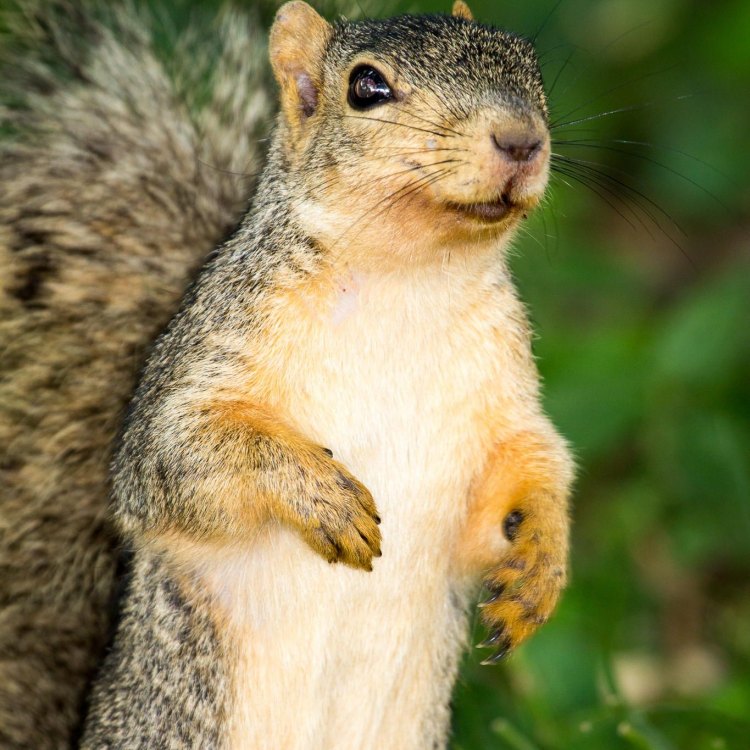
Fox Squirrel
- Adult Size: 12 to 15 inches
- Average Lifespan: 3 to 6 years
- Reproduction: Sexual
- Reproductive Behavior: Mating occurs in late winter or early spring
- Sound or Call: Chattering, barking, and whistling
- Migration Pattern: Non-migratory
- Social Groups: Solitary or in small groups
- Behavior: Diurnal and arboreal
- Threats: Habitat loss, predation, and road accidents
- Conservation Status: Least Concern
- Impact on Ecosystem: Seed dispersers
- Human Use: Hunted for fur and used in culinary dishes
- Distinctive Features: Bushy tail and large size
- Interesting Facts: Can jump up to 20 feet between trees
- Predator: Birds of prey, snakes, and mammals
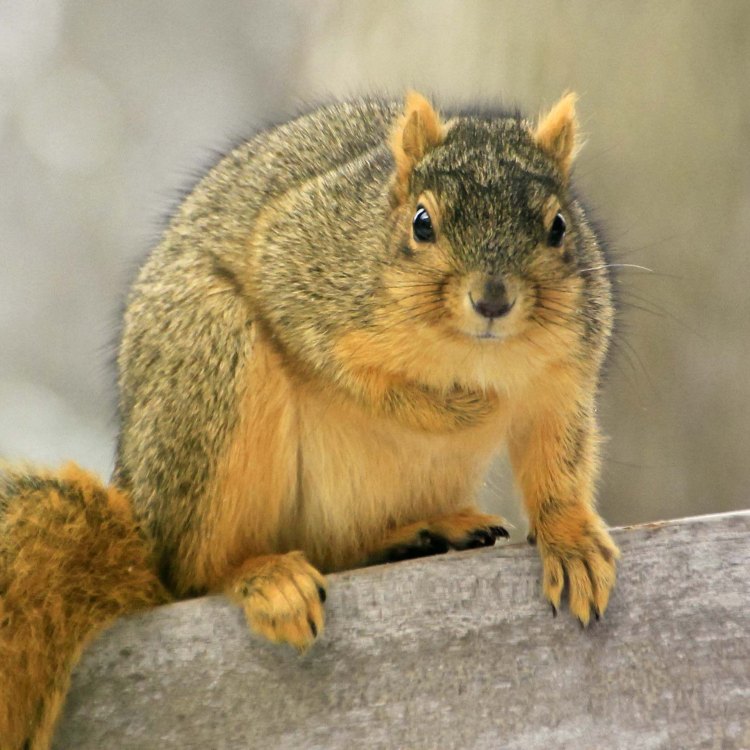
Sciurus niger
The Fascinating Life of Fox Squirrels - Nature's Seed Dispersers
In the world of squirrels, there is one species that stands out with its unique features and interesting behavior - the Fox Squirrel. These creatures have captured our imagination and interest for centuries with their bushy tails, impressive jumping abilities, and vital role in the ecosystem. Today, we dive into the fascinating life of Fox Squirrels and discover why they are truly nature's champions.Appearance and Size
Native to North America, the Fox Squirrel (Sciurus niger) is the largest species of tree squirrel PeaceOfAnimals.Com. These furry creatures have a distinctive appearance with a rusty-red coat on their back and sides, and a creamy white belly. They also have characteristic black markings on their face, feet, and tail. On average, Fox Squirrels can measure between 12 to 15 inches in length, with their tail accounting for half of their total size.
Lifespan and Reproduction
In the wild, Fox Squirrels have an average lifespan of 3 to 6 years. However, in captivity, they can live up to 18 years. These creatures reach sexual maturity at around one year of age and are capable of breeding throughout their lifespan. The mating season for Fox Squirrels occurs in late winter and early spring, with females giving birth to 2-3 offspring after a 44-day gestation period.
Social Behavior and Communication
Fox Squirrels are primarily solitary creatures, but they can also be found in small groups, especially during the breeding season. They are active during the day, known as diurnal, and spend most of their time high up in trees, making them arboreal animals Fennec Fox. Their communication is diverse, with a range of sounds and calls such as chattering, barking, and whistling. These vocalizations are used to communicate alarm, mating, and territorial boundaries.
Habitat and Migration
Fox Squirrels are non-migratory animals, meaning they do not travel long distances to find food or shelter. They are widespread across North America, with a habitat that includes deciduous and coniferous forests, urban and suburban areas, and agricultural lands. These adaptable creatures can thrive in various environments and are often found near human settlements.
Behavior
Fox Squirrels are known for their energetic and acrobatic behavior. They spend most of their time foraging for food, which includes nuts, seeds, fruits, and insects. These creatures have sharp claws and a strong grip that allows them to climb and jump between trees with ease. In fact, they can jump up to 20 feet between trees, making them one of the most agile mammals in the world.
Threats and Conservation Status
Like many other wildlife species, Fox Squirrels face various threats in their natural habitat. Habitat loss and fragmentation due to urbanization and deforestation are significant threats to their survival. Additionally, they are also preyed upon by birds of prey, snakes, and other mammals. Road accidents are another significant cause of mortality for these creatures.
Despite these threats, Fox Squirrels are classified as a species of Least Concern by the International Union for Conservation of Nature (IUCN). This is due to their widespread distribution and adaptable nature. However, it is essential to continue monitoring their population and address any concerns that may arise in the future.
Impact on Ecosystem
Fox Squirrels play a crucial role in their ecosystem as seed dispersers. These creatures have a habit of burying food in the ground, and often forget about these hidden treasures. The buried nuts and seeds then germinate and grow into new trees, contributing to the health and diversity of the forest. Their role in seed dispersal helps to maintain forest ecosystems, making them vital members of the natural world.
Human Use and Interesting Facts
Throughout history, Fox Squirrels have been hunted for their fur and used in culinary dishes in some cultures. However, this practice has decreased significantly in modern times. Due to their large size and agility, they are also popular among birdwatchers, photographers, and nature enthusiasts.
Aside from their role in the ecosystem, these squirrels have several other interesting facts that make them stand out even more. For instance, they have a unique huddle behavior, where they will gather in groups for warmth during cold weather. They also have a keen sense of smell, which helps them locate buried nuts and seeds. And as mentioned earlier, their incredible jumping abilities are impressive, and they can even use their tail as a parachute to slow their descent.
Final Thoughts
In conclusion, the Fox Squirrel is a fascinating creature with many unique features and behaviors that make it stand out in the animal kingdom. From their distinctive appearance and impressive jumping abilities to their vital role in seed dispersal, these squirrels are truly nature's champions. However, like many other wildlife species, they face threats that require continuous monitoring and conservation efforts to ensure their survival.
So, next time you spot a Fox Squirrel scurrying across your yard or in a nearby tree, take a moment to appreciate this incredible creature and its role in our ecosystem. And remember, we all have a responsibility to protect and preserve our wildlife for future generations to enjoy.
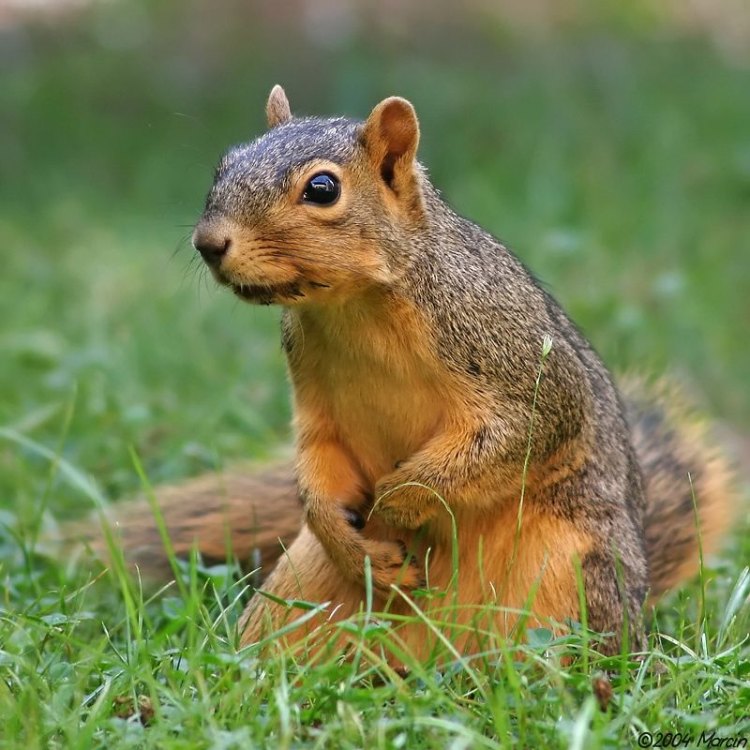
The Curious and Resourceful Fox Squirrel: A Native of North America
Disclaimer: The content provided is for informational purposes only. We cannot guarantee the accuracy of the information on this page 100%. All information provided here may change without prior notice.


